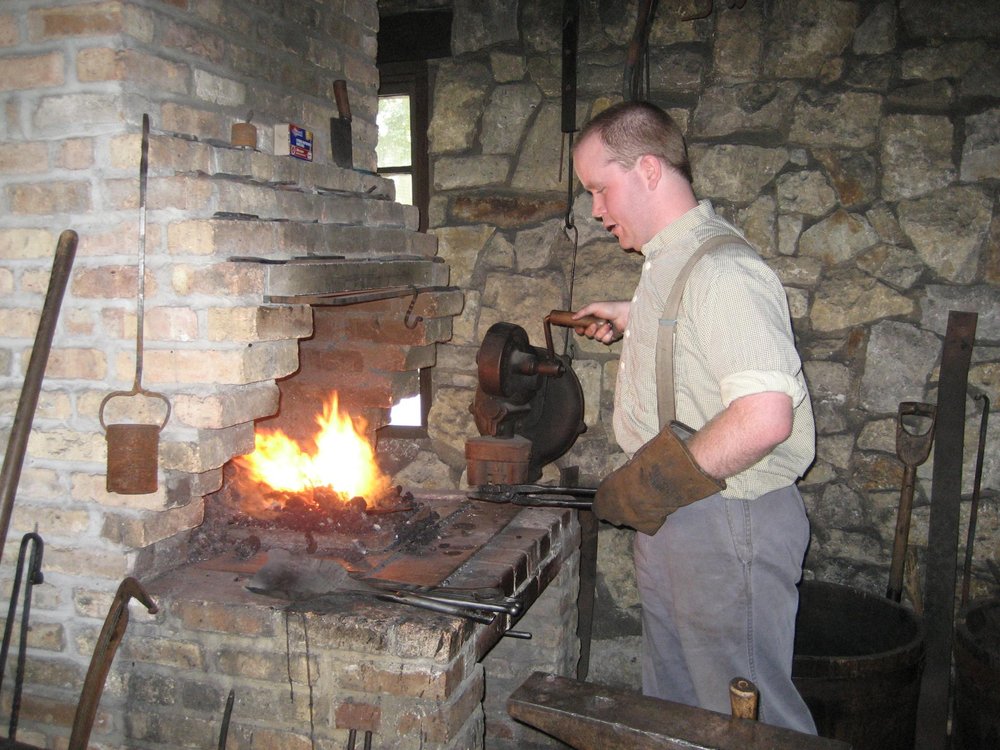
While in the blacksmith shop, you will see science, technology, and mathematics in action. To get the day started, the blacksmith must use a pulley system to get the bellows moving air into the forge, which starts and stokes the fire throughout the day. Once the fire reaches a glowing orange/yellow, work can begin. When the iron is placed into the fire it will start to change colors. Deep red is around 1200 degrees Fahrenheit, yellow or orange is around 2000 degrees Fahrenheit, and a bright white is around 2800 degrees Fahrenheit and iron’s melting point. Iron in the forge heats up via conduction, which means heat is passed along from the hotter end to the colder end as molecules vibrate.
Once the iron reaches 2000 degrees Fahrenheit, the work can begin. Using the tools around the shop, the blacksmith passes his energy through the tool to shape the iron. Every time the iron must be reheated, the bellows pulley system is used to bring the temperature of the forge back up. To cut the iron into smaller shapes, it is placed onto a wedge and struck with a hammer in order to easily bend and snap off.
Along with the basic hardware blacksmiths create, they might also make horseshoes and rings to fit onto wagon wheels. In order to make these products, the blacksmith must have proper measurements to ensure the horse or other form of transportation can properly function with the new iron fittings.